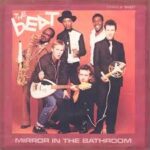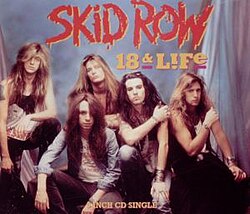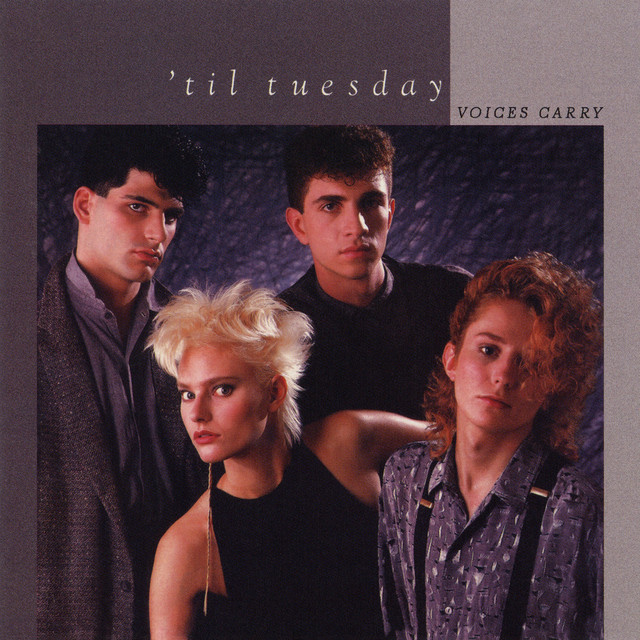 In 1980, the English Beat released “Mirror in the Bathroom,” a song that would become a defining track of the 2 Tone ska movement, capturing both the frenetic energy of the genre and the introspective anxieties of youth. With its infectious rhythm, punchy horn lines, and compelling lyrical content, the song blends danceable music with deeper reflections on self-image and personal isolation. Unlike many upbeat tracks of its era, “Mirror in the Bathroom” juxtaposes the buoyant rhythms of ska with a candid exploration of narcissism, introspection, and the subtle tension between public persona and private identity. Its driving bassline, tight percussion, and clever interplay between vocals and instrumental hooks make it an enduring classic that continues to resonate decades later. English Beat’s ability to marry lyrical wit with irresistible grooves ensures that the track remains as compelling today as it was upon its release, illustrating the band’s mastery in combining social commentary with dance-floor sensibilities. Beyond its musical brilliance, “Mirror in the Bathroom” reflects a broader cultural moment in late-1970s and early-1980s Britain, where post-punk, ska, and the 2 Tone movement coalesced to produce music that was as socially aware as it was rhythmically infectious. Its enduring appeal lies in its clever lyricism, vibrant instrumentation, and the way it captures a moment in time while remaining timeless in its resonance with listeners who find themselves contemplating self-awareness and societal pressures amidst infectious grooves.
In 1980, the English Beat released “Mirror in the Bathroom,” a song that would become a defining track of the 2 Tone ska movement, capturing both the frenetic energy of the genre and the introspective anxieties of youth. With its infectious rhythm, punchy horn lines, and compelling lyrical content, the song blends danceable music with deeper reflections on self-image and personal isolation. Unlike many upbeat tracks of its era, “Mirror in the Bathroom” juxtaposes the buoyant rhythms of ska with a candid exploration of narcissism, introspection, and the subtle tension between public persona and private identity. Its driving bassline, tight percussion, and clever interplay between vocals and instrumental hooks make it an enduring classic that continues to resonate decades later. English Beat’s ability to marry lyrical wit with irresistible grooves ensures that the track remains as compelling today as it was upon its release, illustrating the band’s mastery in combining social commentary with dance-floor sensibilities. Beyond its musical brilliance, “Mirror in the Bathroom” reflects a broader cultural moment in late-1970s and early-1980s Britain, where post-punk, ska, and the 2 Tone movement coalesced to produce music that was as socially aware as it was rhythmically infectious. Its enduring appeal lies in its clever lyricism, vibrant instrumentation, and the way it captures a moment in time while remaining timeless in its resonance with listeners who find themselves contemplating self-awareness and societal pressures amidst infectious grooves.
English Beat and the Rise of 2 Tone Ska
Emerging from the late 1970s and early 1980s British music scene, English Beat became one of the pivotal bands of the 2 Tone ska revival. The movement, blending traditional Jamaican ska with punk’s energy and social consciousness, offered a soundtrack for a generation grappling with economic uncertainty, social tensions, and cultural change. English Beat distinguished themselves with their ability to combine high-energy rhythms, socially conscious lyrics, and engaging melodies.
“Mirror in the Bathroom” exemplifies this fusion. Unlike the politically overt tracks that dominated parts of the 2 Tone catalog, this song approaches its subject matter with introspection, personal reflection, and sharp lyricism. The band’s ability to marry danceable music with thoughtful themes allowed them to stand out among their contemporaries, creating tracks that could fill clubs and encourage self-reflection simultaneously.
Origins and Inspiration
The song was reportedly inspired by lead singer Dave Wakeling’s fascination with self-reflection and the ways in which individuals confront themselves privately versus publicly. The mirror serves as a central metaphor, symbolizing both self-scrutiny and narcissism, as well as the tension between appearance and reality.
Lyrics such as:
“Mirror in the bathroom, wall to wall
Shows me everything”
capture the essence of the song: an honest, at times humorous, meditation on how individuals perceive themselves in isolation. By placing this reflection in the bathroom—a private, mundane space—the song emphasizes the intimacy of self-awareness, while the upbeat, infectious ska rhythms create a playful tension with the otherwise introspective lyrics.
This duality between introspection and danceability became a hallmark of English Beat’s approach, allowing listeners to both move physically to the music and engage mentally with its themes.
Musical Composition and Arrangement
“Mirror in the Bathroom” is built around a driving, staccato bassline that immediately propels the track forward. The song’s rhythmic intensity is accentuated by tight drum patterns, punctuated by snappy snare hits and syncopated hi-hat work. This rhythmic foundation provides a platform for the signature ska horn lines that weave in and out of the mix, adding melodic flair and accentuating the song’s dynamic energy.
Guitar riffs are sharp and staccato, maintaining the track’s rhythmic propulsion without overwhelming the vocals. The keyboard work adds texture and subtle harmonic depth, creating a layered soundscape that feels both intricate and approachable. The interplay between instruments creates a sense of tension and release, mirroring the introspective yet playful tone of the lyrics.
Lyrics and Thematic Exploration
Lyrically, “Mirror in the Bathroom” balances self-aware humor with a poignant exploration of identity and solitude. The central metaphor of the mirror highlights both self-examination and a slightly narcissistic fascination with oneself, reflecting broader anxieties about personal identity and social perception.
Lines like:
“Mirror in the bathroom, wall to wall
Shows me everything”
underscore the tension between private reflection and public presentation. The song captures the universality of self-consciousness—moments when individuals confront their own thoughts, flaws, and desires in isolation. Its brevity and repetition reinforce the obsessive nature of introspection, while its witty phrasing ensures that the themes resonate without feeling heavy-handed.
The song also subtly comments on societal pressures to conform or project a certain image. The mirror becomes a symbol for the gaze of society as much as personal reflection, linking the internal and external dimensions of identity. This layered approach to songwriting allows “Mirror in the Bathroom” to operate simultaneously as a personal confession, a social observation, and a dance-floor anthem.
Dave Wakeling’s Vocal Delivery
Dave Wakeling’s vocal performance is central to the song’s impact. His delivery oscillates between matter-of-fact observation and heightened emotional expression, imbuing the lyrics with a sense of authenticity and immediacy. Wakeling’s phrasing emphasizes both the playful and serious aspects of the song, drawing listeners into the narrative while maintaining a sense of rhythmic precision aligned with the ska instrumentation.
The vocal tone conveys both urgency and wit, reflecting the balance between self-examination and levity that defines the track. Backing vocals and subtle harmonies further enhance the song’s texture, reinforcing the infectious energy without overshadowing the lyrical content.
Production and Sound Aesthetic
Produced with an emphasis on clarity and rhythmic punch, “Mirror in the Bathroom” exemplifies the crisp, vibrant sound of 2 Tone ska. The mix highlights the bass and drums, ensuring that the track’s driving rhythm remains prominent, while horn lines and guitars are given space to punctuate and embellish the arrangement.
The production allows each instrument to maintain clarity while contributing to the song’s cohesive energy. This approach enhances the danceable quality of the track while preserving its thematic depth, ensuring that listeners can both move to the rhythm and engage with the lyrics.
Reception and Cultural Impact
Upon release, “Mirror in the Bathroom” received critical acclaim and became one of English Beat’s most recognizable tracks. Its blend of ska rhythms, sharp lyricism, and thematic depth resonated with fans of the 2 Tone movement and beyond. The song achieved notable chart success in the UK and later gained traction internationally, solidifying the band’s reputation as one of the leading voices in the ska revival.
Culturally, the song has remained influential for its ability to merge introspection with danceable energy. It has been covered, referenced, and celebrated across generations, demonstrating the enduring appeal of music that balances emotional and rhythmic complexity. Its focus on self-reflection, identity, and societal pressure continues to resonate in contemporary contexts, making it as relevant today as it was at the time of its release.
Live Performances and Legacy
“Mirror in the Bathroom” has been a staple of English Beat’s live shows, often eliciting enthusiastic crowd participation. The song’s infectious rhythm and catchy horn lines translate exceptionally well to the stage, while its lyrical themes invite reflection and engagement from audiences.
Live renditions often emphasize the energy and precision of the band’s instrumentation, highlighting the tension between introspection and exuberance that defines the track. The song’s enduring popularity in live settings underscores its ability to bridge emotional depth with communal enjoyment, a hallmark of English Beat’s broader appeal.
Why “Mirror in the Bathroom” Matters Today
“Mirror in the Bathroom” endures because it combines timeless themes of self-awareness, identity, and social perception with music that remains irresistibly danceable. Its clever lyricism, infectious rhythm, and dynamic instrumentation make it a track that resonates across generations, appealing both intellectually and viscerally.
The song also serves as a representative moment of the 2 Tone ska movement, highlighting the ability of music to address personal and social issues while remaining accessible and engaging. Its legacy continues to inspire artists and listeners, demonstrating the power of music to combine entertainment with reflection.
Final Reflections
English Beat’s “Mirror in the Bathroom” is more than a ska classic; it is a masterful exploration of self-reflection, identity, and the tension between private introspection and public persona. Its combination of infectious grooves, witty lyricism, and dynamic performance creates a song that is both memorable and meaningful.
Dave Wakeling’s vocal delivery, the band’s tight instrumentation, and the song’s clever production ensure that it remains a defining track of 1980s ska and a touchstone of alternative British music. “Mirror in the Bathroom” continues to engage listeners with its humor, insight, and rhythmic vitality, standing as a timeless anthem of self-awareness and musical ingenuity.


